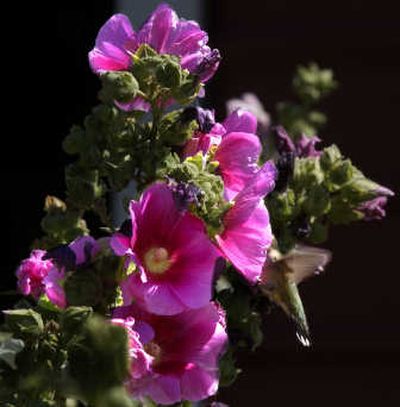Moisture sensors aren’t foolproof

Several of you wrote to ask where you could get the rain/humidity sensor I mentioned in my column a couple of weeks ago.
Most good sprinkler supply houses should have them. You could also look online. They often are referred to as either a rain or humidity sensor. They work on the principle that if the humidity is high (you can set the level you want), it is likely that it rained and thus the lawn got watered. The sensor will turn off the system for that day.
The sensor isn’t foolproof, though. First, the sensors work best in spring and fall when we usually get the most rain. Second, the sensor does not tell you how much rain fell or what the actual soil moisture level is, so it is possible that the soil could be on the dry side. You will have to observe it for a while. Still, it’s better than just letting the sprinkler system run regardless.
Greens need rain
My lettuce and spinach are getting tough before they get big enough to eat. What’s going on?
Denise Powell, Mead
This has been a wacky spring when it comes to weather. It was cold for a long time during April and May. Then we got some short runs of very hot weather followed by another stretch of cold weather. On top of this, it’s been very dry in Spokane – two inches short for the year so far. The rapid shifts between really cold and really hot and the lack of water have caused your lettuce and spinach to become tough much earlier than usual. Not much you can do about it when Mother Nature decides to be uncooperative. Other vegetables to watch if this weather keeps up are cucumbers. If it stays dry and they don’t get consistent, even watering when they start to form, they will be bitter. So check those sprinklers folks. It’s going to be a long summer.
Hollyhock beetles
My hollyhock leaves are full of holes and something is eating out the flower heads before they even open. I can’t see any bugs, so what’s going on?
Eugene Cadg, Seattle
Your hollyhocks are being attacked by a weevil or snout beetle. This is a well- camouflaged bug under half an inch long with a long snout that has antennae at its ends. The adults feed on the leaves and drill holes in the flowers to lay eggs. That is why the leaves are full of holes. When the larvae hatch in the flower head, they feed on the seeds and flowers, destroying them. They also feed on the insides of stems and roots. You don’t see the bug very often because they tend to ball themselves up and drop to the ground when they are disturbed. In the fall, cut down any of the affected plants and throw them away. Clean up the area under the plants and remove any debris that might harbor the pests for the winter.